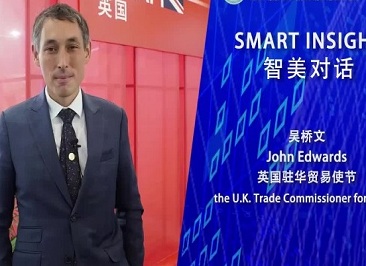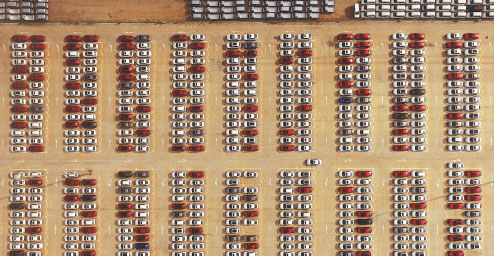Finding what's best to lead nation's west
Tan Yingzi in Chongqing
Updated:2019-08-01
China Daily
Municipality seeks solutions to lift less-developed areas out of poverty
Editor's Note: As the People's Republic of China prepares to celebrate its 70th anniversary on Oct 1, China Daily is featuring a series of stories on the role regions have played in the country's development and where they are today.
Until three years ago, Meng Min could barely have imagined returning home to Chongqing to start up a company. The former chief scientist at Covance, one of the world's largest drug development companies, had studied and worked in the United States for 24 years.
But attracted by China's fastgrowing pharmaceutical industry and favorable local policies, Meng returned to her hometown in 2016 and started her own bio-analytical laboratory, Chongqing Denali Medpharma, in the city's development zone.
"Chongqing is the youngest municipality in China. You can reach your goals here if you have solid knowledge and skills," she said.
Back in 1980s when Meng was a high school student, Chongqing, on the upper reaches of the Yangtze River, was just another polluted industrial city known for its large motor and vehicle manufacturing industry. She and other ambitious young people in the inland city usually chose to pursue their dreams in major cities, such as Beijing and Shanghai, or go abroad.
But now, more highly talented people like Meng are moving to Chongqing, recognized as an open, prosperous and attractive place to work and live.
Since the founding of the People's Republic of China in 1949, Chongqing has played several important roles in the country's development, from a major industrial base to a national defense manufacturing area in the 1960s.
In 1997, it became China's fourth municipality after Beijing, Shanghai and Tianjin. Covering 82,402 square kilometers, it's by far the largest of the four, even bigger in area than the Republic of Ireland or the Czech Republic.
Since 1999, the metropolis in Southwest China has become a leader in the country's development program for the western regions which lag behind the affluent eastern coastal areas.
In 2010, China's third national development zone, the Chongqing Liangjiang New Area, was established after the Shanghai Pudong and Tianjin Binhai new areas. Since then, it has explored new approaches for inland reform and opening-up.
During his inspection trip to Chongqing in 2016, President Xi Jinping said the municipality was "full of promise" and would become an inland international logistics hub.
In April, Xi visited Chongqing again and said that the city should strive for new achievements and breakthroughs under the drive to develop the west of the country in the new era.
He stressed that Chongqing should promote high-quality development in manufacturing and lead the opening-up of the entire western region.
Inland hub
In the past, mountainous Chongqing relied on the Yangtze River to connect with the outside world.
"It was really slow," said Wang Chenghua, deputy general manager of the international business department of Changan Minsheng APLL Logistics.
"We often had to refuse orders which had to be delivered in a short amount of time. But now, we can do business with almost everyone at home and abroad."
The Liangjiang New Area, boasting a large river port, airport and railway network, has helped Chongqing become an international trade and logistics hub connecting China, Europe and Southeast Asia.
It is also the starting point of the New International Land-Sea Trade Corridor, which was developed under the China-Singapore (Chongqing) Demonstration Initiative on Strategic Connectivity signed in 2016.
Han Baochang, director of the demonstration initiative's administration committee, said the trade corridor links 160 ports in 71 countries and regions worldwide.
In the south, the trade corridor runs from western China to Qinzhou port in the Guangxi Zhuang autonomous region, which connects to Southeast Asia.
In the north, it links the China-Europe freight trains, launched from many western Chinese cities, before they head to Central Asia and Europe.
Compared with the traditional route via the Yangtze River and Shanghai, the new route is a faster way to connect China's inland western region with major ports in the south, saving about 20 days in transport time.
Opened in 2011, the rail link between Chongqing and Duisburg, Germany, has also become another integral transport link and vital artery of the Belt and Road Initiative. Goods can be transported along the 11,179-kilometer route in about 13 days.
"Chongqing has found a feasible way to open up to international markets and it can provide a set of solutions for other inland regions," said Du Shulin, a senior official from the Liangjiang New Area.
Quality manufacturing
On May 17, 2018, Chongqing Liangjiang Star, China's first carrier rocket designed and built by a private company, was launched successfully in Northwest China.
"If you want to make a rocket, you must build an engine first," said Shu Chang, founder and chief executive of Chongqing OneSpace Technology.
"When I visited my teachers at Beihang University and some Chinese rocket experts, do you know what they told me? They said 'You can never build an engine if you don't have 1 billion yuan ($145 million)'."
Shu decided eventually to work with Chongqing Liangjiang Aviation and the Aerospace Industrial Park to raise the funds.
They each contributed 80 million yuan to set up Chongqing OneSpace Technology Company, enough capital for Shu to follow his dream of building an engine.
In the past two years, the Liangjiang New Area has raised a total of 500 million yuan for the project and helped OneSpace become the first Chinese private company to launch a rocket.
Now, the company has signed launch agreements with many clients at home and abroad, and its launch program is fully booked until next year.
The Liangjiang New Area has taken the lead in industrial transformation and upgrades in order to help Chinese companies compete against the rest of the world. It explores innovative finance models to promote the rapid growth of emerging industries, such as robotics, biomedicine, information technology and new energy.
It has attracted 60 billion yuan in market capital to those fields by setting up a 2 billion yuan equity investment fund for strategic emerging industries. Leading companies, such as BOE Technology Group and Japan's robot manufacturing company Kawasaki, have benefited greatly from those strategies.
To date, 149 Fortune 500 companies have settled in Liangjiang.
Last year, Chongqing hosted China's first Smart Expo which attracted 316 projects with a total of 567 billion yuan investment. The expo will be held in Chongqing every year.
"Smart Expo will provide a driving force for Chongqing's industrial transformation and high-quality development," said Wu Cunrong, deputy mayor of Chongqing.
"By 2022, the sales income of our smart industry will try to reach 1 trillion yuan," he added.
|
An aerial view of cars parked at Guoyuan Port in Chongqing, waiting to be transported to other parts of the country along the Yangtze River.Wang Quanchao / Xinhua |
Video

John Edwards, the UK trade commissioner for China, praised Chongqing over its rise as a burgeoning center in intelligent manufacturing.






